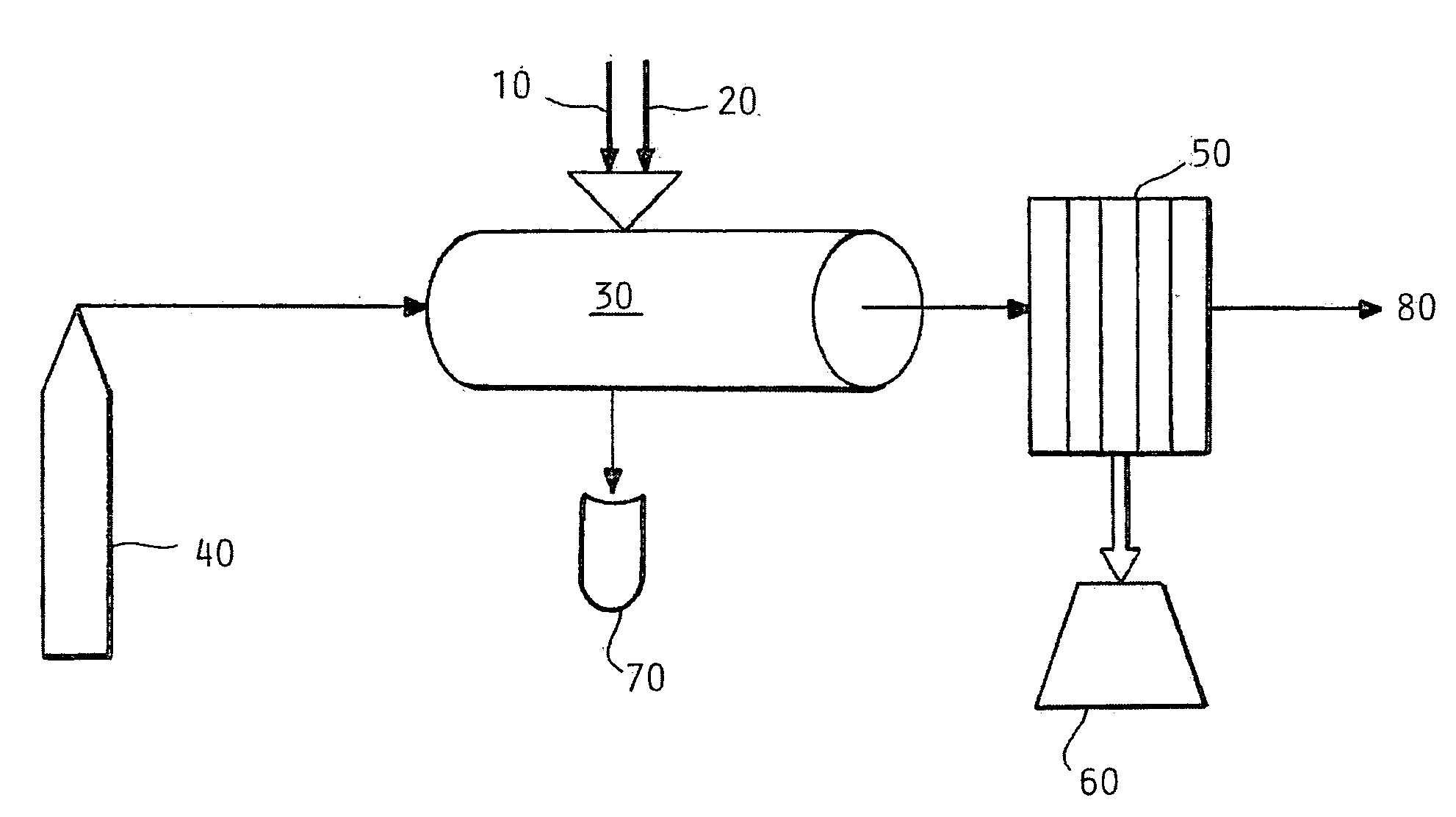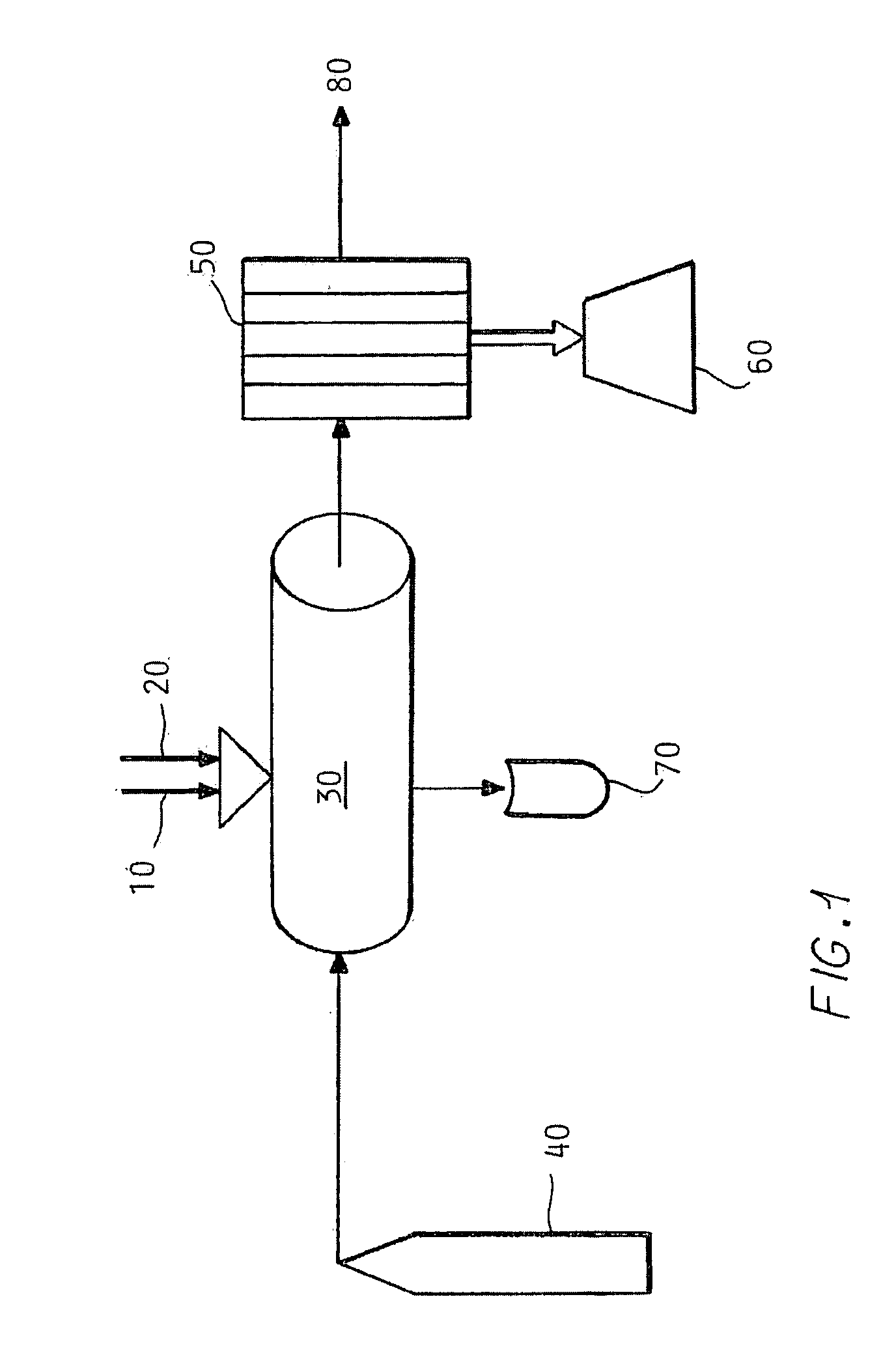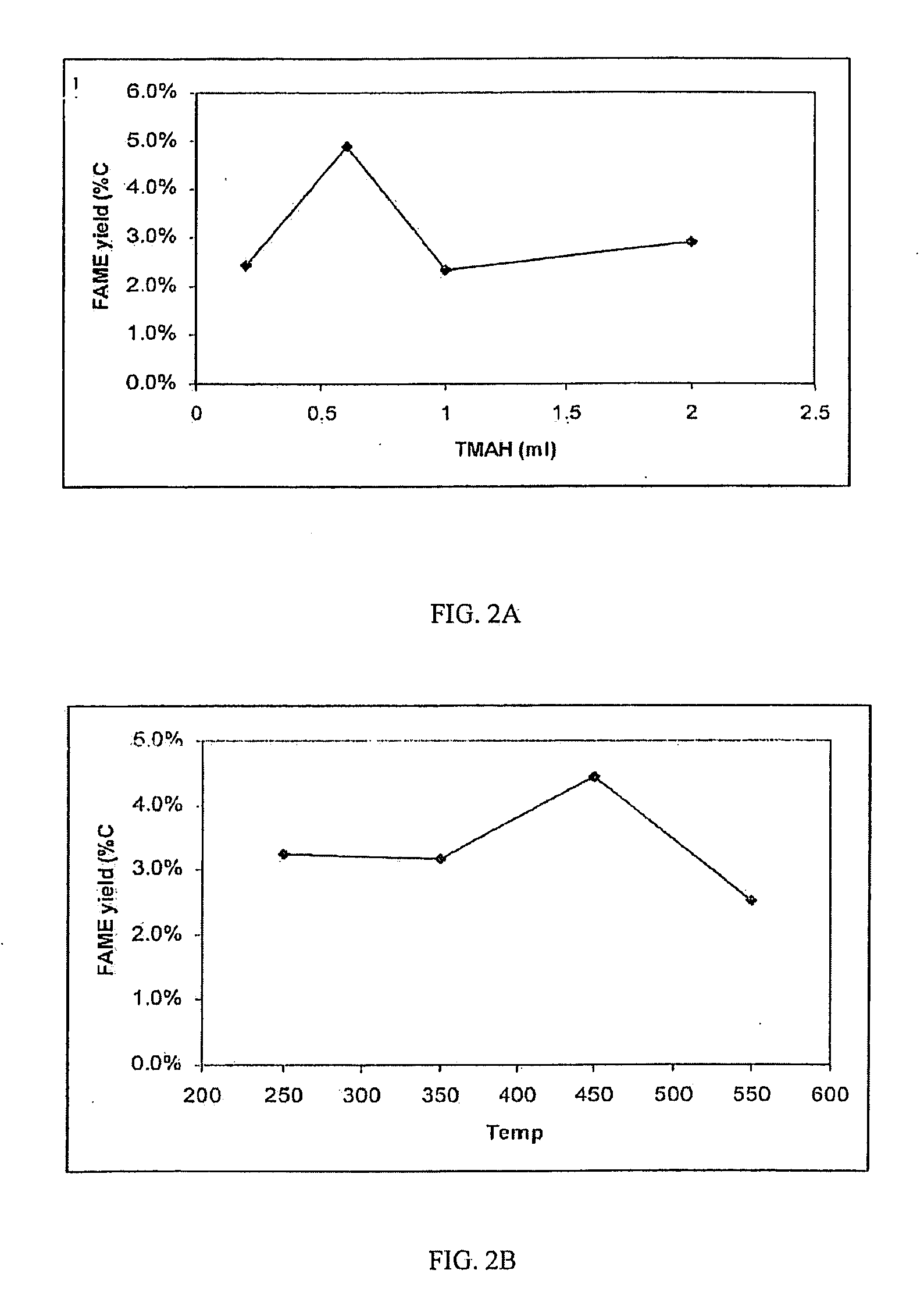Direct Conversion of Biomass to Biodiesel Fuel
a biodiesel and biomass technology, applied in the preparation of carboxylic compounds, fatty acid chemical modification, fuels, etc., can solve the problems of time-consuming and not necessarily economically attractive biodiesel from plant feedstocks, dangers of working with chemicals, and use of solvents such as solvents
- Summary
- Abstract
- Description
- Claims
- Application Information
AI Technical Summary
Benefits of technology
Problems solved by technology
Method used
Image
Examples
examples
[0039]Examples are presented below. The examples are intended only to further illustrate the embodiments disclosed herein and are not intended to limit the scope of the invention as defined by the claims.
[0040]An algal biomass was collected from the effluent of a local wastewater treatment facility. This algae sample, dominated by diatoms as detected under microscope, was collected from the surface of the water and air dried. Another algal sample was collected from a local lake using ultrafiltration. Briefly, 60 L of water from the lake was concentrated to about 60 mL using tangential flow filtration with a 0.2 μm membrane. The concentrated algae sample was freeze dried. This sample consisted mainly of Pennate diatoms and Cryptomonas sp, as observed under a microscope.
[0041]To prepare the algae for the chemoreactor, 1-2 grams of dried algae was mixed with 1 ml TMAH (25% in methanol). It should be noted that TMAH (25% in water) can also be used. Tests indicate the yield with TMAH in ...
PUM
| Property | Measurement | Unit |
|---|---|---|
| temperature | aaaaa | aaaaa |
| temperature | aaaaa | aaaaa |
| temperature | aaaaa | aaaaa |
Abstract
Description
Claims
Application Information
 Login to View More
Login to View More - R&D
- Intellectual Property
- Life Sciences
- Materials
- Tech Scout
- Unparalleled Data Quality
- Higher Quality Content
- 60% Fewer Hallucinations
Browse by: Latest US Patents, China's latest patents, Technical Efficacy Thesaurus, Application Domain, Technology Topic, Popular Technical Reports.
© 2025 PatSnap. All rights reserved.Legal|Privacy policy|Modern Slavery Act Transparency Statement|Sitemap|About US| Contact US: help@patsnap.com



